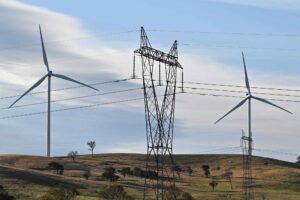A new assessment of the damaging 2019-20 summer bushfires suggests that more than a year’s worth of Australian greenhouse gas emissions were released due to the more than 18 million hectares of area burnt, as much as double previous estimates.
New research published in leading scientific journal Nature finds that the bushfires resulted in the release of 715 million tonnes of carbon dioxide into the atmosphere. This is more than Australia’s 2018 total CO2 emissions, which were 537.4 million tonnes CO2.
Researchers used updated satellite observation techniques to produce the new estimate, also finding that air pollution caused by the bushfires travelled around the world, causing New Zealand glaciers to turn brown and were detected in South America and beyond.
The new estimates have been produced by researchers from the Netherlands Institute for Space Research, who applied advances in satellite technologies to produce estimates of the emissions released with greater accuracy than had been achieved previously.
Professor Pete Strutton of the Institute for Marine and Antarctic Studies at the University of Tasmania, said the findings provided a new perspective of the scale of the 2019/20 bushfires, and how they compared to Australia’s normal level of greenhouse gas emissions.
“This paper used satellite observations to calculate the amount of CO2 released by the 2019-20 Australian fires, with greater accuracy than previous estimates,” Strutton said.
An additional paper, also published in Nature and prepared by the ARC Centre of Excellence for Climate Extremes at UNSW and the Institute for Marine and Antarctic Studies, found the bushfires smoke triggered a phytoplankton bloom of unprecedented size in the Southern Ocean, between New Zealand and South America, that grew to cover an area larger than Australia.
The researchers attributed to a surge in aerosol plumes caused by the bushfire smoke, which were released into the atmosphere and subsequently settled in the Southern Ocean. The smoke particles carried amounts of iron critical for photosynthesis and phytoplankton growth, tripling the concentrations normally found in that part of the ocean and triggering the bloom.
“The acceleration in phytoplankton growth as the fires took hold in Australia was so quick that it only lagged the blazes by a few weeks and in some cases just days,” Jakob Weis, PhD student and contributor to the study said.
“This was even as the impact of the smoke was felt in fits and starts rather than appearing as a constant rain of smoke on the ocean. As an example, we found the fires on just one day, January 8, deposited 25 per cent of the black carbon and iron for the whole of January into that part of the ocean.”
Strutton added that the growth of phytoplankton bloom likely absorbed a similar amount of carbon dioxide as was released by the bushfires, meaning the vast amount of emissions were ultimately deposited into the ocean.
“In the paper on the phytoplankton bloom produced by the fire aerosols, we calculated that the additional ocean productivity, in terms of carbon biomass, was about the same as the CO2 emissions from the fires,” Strutton said.
“That is, the bloom sucked most of the fire CO2 out of the atmosphere. But we were unable to say that this CO2 was permanently removed from the atmosphere – some may have been re-released, depending on what happened to the bloom.”
While the phytoplankton bloom may have absorbed the emissions produced by the bushfires, Dr Chris Mays, an Australia-based palaeontologist at The Swedish Museum of Natural History, warned that the growth of such a large phytoplankton bloom could have a massive implications for ocean health.
“Explosive blooms of plankton can be deadly to animals. A single bloom event can wipe out countless thousands of animals in a few days, and leave ‘dead zones’ in freshwater lakes and coastal areas,” Mays said.
“We have seen examples of plankton blooms and wildfires co-occurring during the most extreme mass extinctions of the past. But the finding by Tang and colleagues of modern blooms being linked directly to wildfires is a major advance.”
“The increase in plankton blooms will apply additional pressure on freshwater and coastal ecosystems that are already suffering from a host of other stressors like overfishing and intolerable warming,” Mays added.










